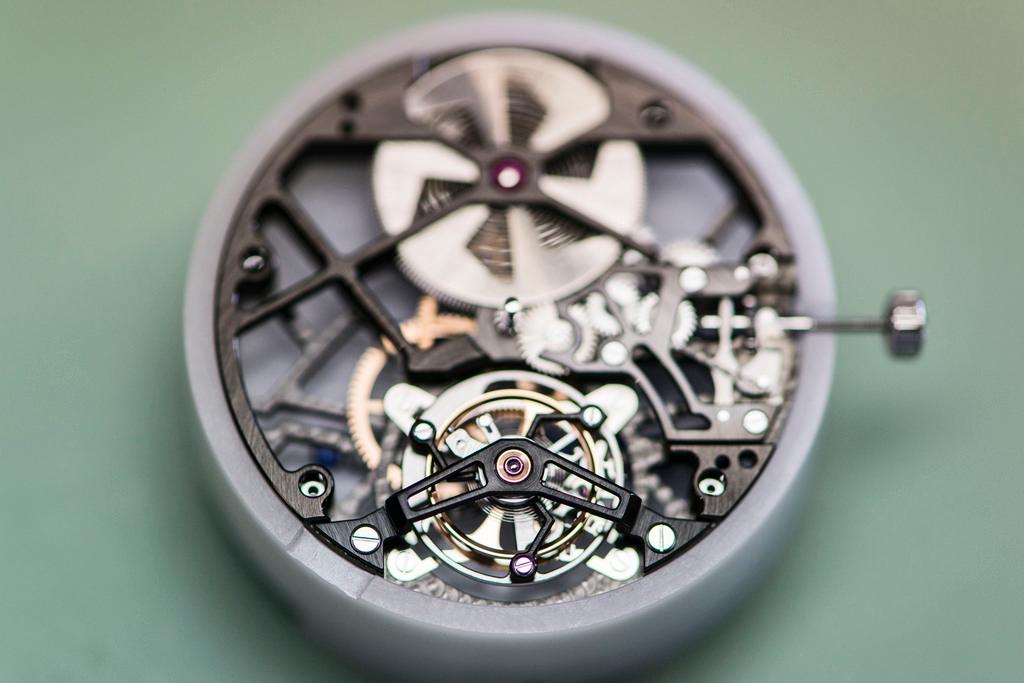Strong Swiss franc brings greater risks for exports

Last year was difficult for Switzerland’s watchmakers. The lingering impact of China’s clampdown on corporate gift-giving, civil unrest in Hong Kong - the world’s biggest market for Swiss watches - and the gyrations of the rouble combined to slow growth in exports to 2.3% in the first 11 months of the year.
Protests in Hong Kong are over for now, and the main impact of Beijing’s anti-graft drive has faded. But market conditions in Russia remain volatile.
On top of this, Swiss watchmakers will now have to cope with a stronger currency in 2015, after the Swiss National Bank stunned markets by scrapping its policy of preventing the Swiss franc appreciating beyond CHF1.20 to the euro last week.
“A strong Swiss franc has historically been bad for Richemont’s profit and loss account and even more so for Swatch Group,” says Thomas Chauvet, an analyst at Citigroup.

More
Financial Times
External linkWatchmakers are in cautious mood as, against this volatility, the Salon International de la Haute Horlogerie – the first big watch fair of the year – starts in Geneva today.
“The brands are comfortable, but they are also being careful because the global political and economic situation is not very calm,” says Fabienne Lupo, chairwoman and managing director of Fondation de la Haute Horlogerie, the foundation behind SIHH. “However, we still [had] growth in Swiss watch exports of between 2 and 3% in 2014. That is less than in previous years but it is still positive.”
Some analysts believe that, barring further unexpected shocks, growth could return to its long-run average. “I am probably in the optimistic camp,” says Jon Cox, head of Swiss equities at Kepler Cheuvreux, “but I think the industry will grow around 7% as measured by exports. The high end might grow faster, around 8%.”
He is sanguine, he says, because with the initial impact of Beijing’s anti-graft drive fading from Chinese data, the dynamics of the country’s watch market will once again reflect the continued rise of the Chinese middle class. And as civil unrest in Hong Kong recedes, tourists should return to its glitzy boutiques.
But most analysts are more pessimistic. “I think growth will be below 7%. Hong Kong is still an issue, China is still a concern,” says Luca Solca at Exane BNP Paribas. “Overall, I think the global luxury industry will grow between 4 and 6% this year, and that is the shape of things to come in watches, rather than the double-digit growth rates we have seen in the past.”
Across Asia, according to René Weber, an analyst at Bank Vontobel in Zurich, the picture is mixed. “In Hong Kong and China, growth is likely to be in the low single digits. Japan and South Korea should see good growth, driven by Chinese tourists,” he says.
PLACEHOLDER
Mr Weber says he expects growth rates in Europe to reach low single digits, but with domestic demand still sluggish, this will mainly be driven by tourists. “There will be fewer Russian tourists, but the Chinese will still be there, and the weakness of the euro against the dollar and Asian currencies will mean that it remains an attractive place to buy watches,” he says.
The biggest question mark hangs over Russian demand. The precipitous decline of the rouble prompted some brands to put up prices in Russia by as much as 40% towards the end of last year – a move expected to slow sales in the country. As Russian buyers account for about 4% of global demand, this is probably manageable for the industry as a whole.
However, individual brands could suffer acutely, particularly at the higher end of the market, where Russians account for between 5 and 10% of demand, according to Mr Solca.
Diversifying
With growth harder to find than in recent years, another trend is likely to be diversification, says Mr Solca. “We saw this last year with Cartier’s sports watch [the Calibre de Cartier Diver]. Other brands could branch out by trying to make their products more attractive to women, for example.”
A second question is how significant the impact of smartwatches will be on traditional manufacturers.
Given renewed impetus by the unveiling last year of the Apple Watch, expected to launch in the coming months, the Swiss brands most exposed are likely to be those at the lower end of the market, such as Swatch, Tissot and Tag Heuer, analysts believe.
Swiss watchmakers are beginning to react. Swatch Group and Tag Heuer are exploring their own smartwatch development, and Montblanc, owned by Richemont, will unveil the TimeWalker Urban Speed e-Strap – which can connect to smartphones via Bluetooth technology – at SIHH.
Montblanc says its e-Strap is a development of its move into digital writing implements.
The company launched a digital pen for use with Samsung devices last year. Nevertheless, it represents a significant development in Swiss-made fine watches.
“These may not be watches with app ecosystems like Apple’s, but they are likely to have things like biometric sensors,” says Mr Solca. “I expect smartwatches to be a big theme this year.”
Copyright The Financial Times Limited 2015

In compliance with the JTI standards
More: SWI swissinfo.ch certified by the Journalism Trust Initiative









You can find an overview of ongoing debates with our journalists here . Please join us!
If you want to start a conversation about a topic raised in this article or want to report factual errors, email us at english@swissinfo.ch.